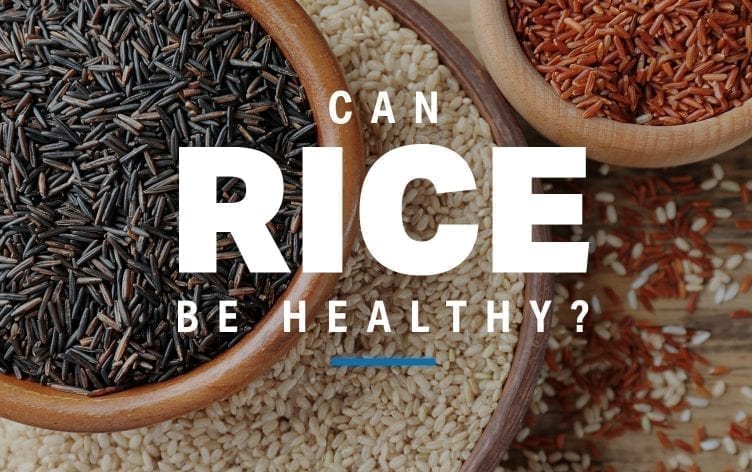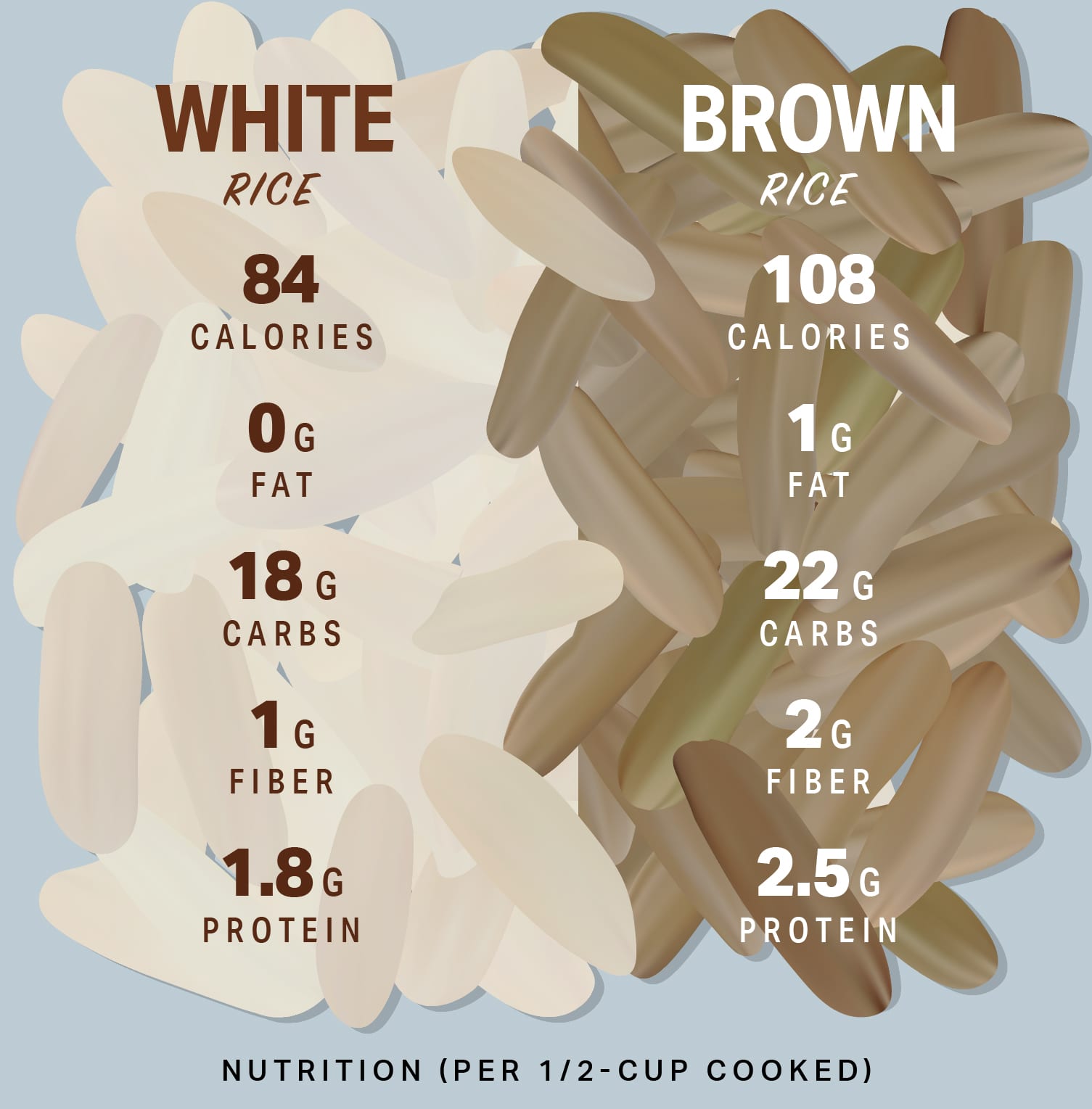
Rice has been found in archaeological sites dating back to 8,000–5,000, B.C., and its domestication likely occurred around that time period in eastern China. Different regions and cultures favor various types of rice, and it continues to be a staple in the diet of much of the world’s population.
Still, with the rise of fad diets like low-carb, rice has gotten a bad rap — very similar to how bread is often unfairly villainized. We know carbohydrates are an essential nutrient and the body’s preferred source of energy, which is why cutting out an entire food group can backfire and lead to disordered eating and a never-ending yo-yo dieting cycle.
Here, a look at the health benefits and why various types of rice can be a healthy part of your diet, depending on how you use them:
HEALTH BENEFITS
There’s a reason rice has been around for thousands of years — it’s a nutritional powerhouse. Whole-grain rice — any form of rice that contains the germ, bran and endosperm — is not only a good source of filling fiber, but it also contains a variety of vitamins and minerals. For example, it’s rich in magnesium (important for bone health, muscle contraction and regulating blood pressure) and manganese (key for brain and nervous system health). It’s also a great source of thiamine, vitamin B6, phosphorus and selenium.
Unlike bread, in which taking a look at the nutrition label can be a helpful step in making a nutritious and satisfying choice, it’s not as necessary for rice. Most varieties , with the exception of white rice, have 2–4 grams of fiber and 2–5 grams of protein per 1/2-cup serving (cooked), and boast similar vitamin content.
THE WHITE VERSUS BROWN RICE DEBATE

While white rice contains fewer nutrients, fiber and protein compared to brown rice (due to processing), it can be considered healthy depending on what it’s eaten with. Pairing white rice with vegetables, beans or lean proteins can add a variety of vitamins, minerals, fiber and protein to any dish.
Rather than stressing about the nutrition label, what’s more important is to think about what you’d like to make with the rice when choosing which type to buy. That’s because you’re probably not going to eat rice on its own, and there are many different consistencies, flavors and textures to consider with each type.
RICE VARIETIES AND HOW TO USE THEM

One of the most common and diverse types of rice, brown rice is tender and nutty, and can come in long-, medium- or short-grain forms. Shorter grains are more separated when cooked, so they’re great for making sushi or risotto. Longer grains are a bit stickier or more clumpy, which is ideal for rice bowls made with lean proteins and veggies.

White rice also comes in the same varying sizes mentioned above but is more tender and bland in flavor due to the removal of the endosperm, bran and germ during processing. As a result, it’s also lower in fiber (because it’s not a whole grain). Less fiber can actually be an advantage for some people, like athletes who need quick-digesting carbs before an intense workout or those with digestive issues. You can also find types enriched with nutrients such as iron, thiamine and folate.

This long-grain rice, originating in India and Pakistan, is very fragrant with nutty and floral aromas. Basmati rice is often used in curry dishes because it can hold up well with heavier sauces.

Sometimes called “forbidden” rice, it originates from Asia and has a deep purple or black color that comes from its anthocyanin content (the same antioxidant found in blueberries and beets). Black rice has a mild, nutty flavor and can be used for savory dishes like this rainbow salad or sweet ones like a black rice coconut pudding. Black rice is also slightly higher in fiber and protein.

Similar to black rice, red rice also gets its color from anthocyanins. The Camargue region of France produces a short-grained, slightly sticky red rice, while Thai red rice or “cargo” rice is similar to jasmine rice. Rich in magnesium and iron, red rice has an earthy, nutty taste and can be used like you would brown rice.

This aromatic long-grain rice has a light, sweet quality and pairs well with seafood and ingredients like coconut, ginger, garlic and cilantro.

This short-grain rice is often used to make risotto due to its higher starch content and ability to contribute to the creamy nature of the dish.

Wild rice is actually a grass that grows in water and originates in North America. It’s excellent eaten alone and can make a great side dish for any meal paired with a variety of vegetables, legumes or other protein sources. Wild rice is also slightly higher in protein and fiber than other rice varieties (including black rice).
THE BOTTOM LINE
Aside from the nutrient content of rice alone, the variety of foods it can be paired with — colorful vegetables, high-quality proteins like eggs, chicken or tofu, spices like ginger and turmeric, even fruits like mango and coconut, to name a few — promise endless possibilities for nourishing and delicious meals. If you focus on adding color to your plate and keep portion sizes in check, rice can certainly be part of a healthy diet.













